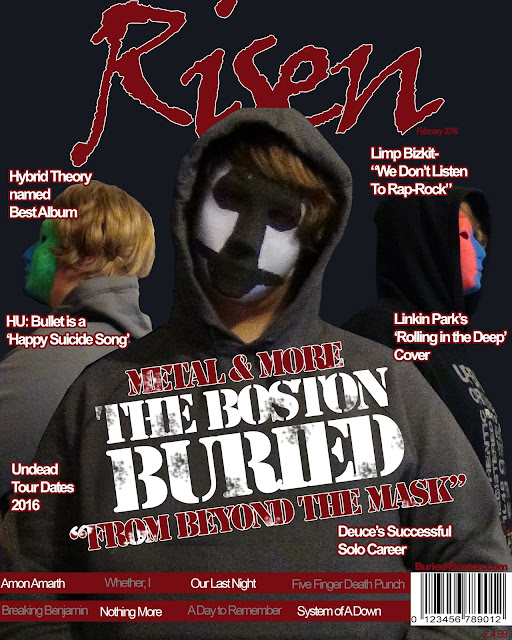Shown here, my final front cover has many features and qualities that would only be possible with a high level of understanding of the photo editing software Photoshop.
Looking at my preliminary task, it seems very lackluster and primitive in comparison to my final cover. The masthead is very basic, and all text is simply enlarged Arial, and in different colours. Whereas the final product has three different font types, (Viner Hand ITC, Gill Sans MT and Arial) and utilises several of the advanced tools that Photoshop offers, such as free transform, the linking and transformation of layers, and the addition of effects (such as the grime effect on 'The Boston Buried'.
The main image on this preliminary cover was plain and uninspiring, and overall bland. It made the simplicity of my original cover look even more plain.
However, for my music product, I learned that creativity was the key to a good cover, so took numerous photos and conglomerated the best and most fitting ones into positions that created the illusion of several people, from only one. For this, spacing and placement was key, so I changed the positioning of the members several times to get the feel of depth, just right.
Additionally I learned how to use the crop and lasso tools in order to remove the background from the multiple photos I took for my coursework and place me onto my three products. This also required knowledge of taking layers from one Photoshop file and inserting them into another, which I also learned how to do after the creation of my college magazine. Additionally, something as basic as adjusting the rotation of text on the page was absent from my college magazine, and the subheadings were far too big and seemed awkwardly placed on the page, as did the masthead with it being plastered over half my head.




















































